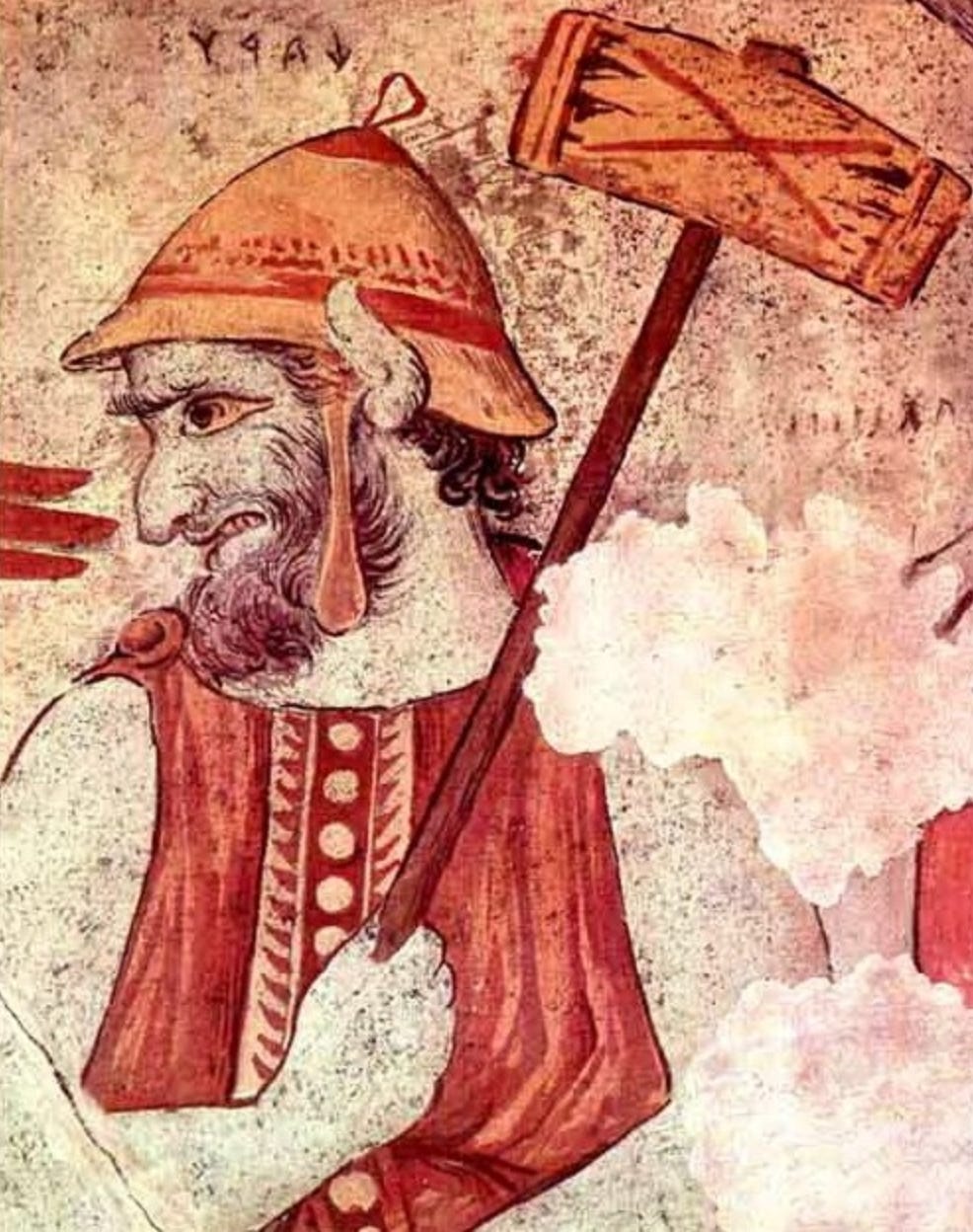Allegory is a powerful tool for describing natural phenomena before the scientific method was developed to determine the cause of said phenomena. An example of the sort of experiences that one would allegorize was encapsulated in an account from Osborn, who wrote (Monumental Egypt, Ch. 1.), “It was at the end of—to my own sensations—a long and very sultry night, that I raised myself from the sofa upon which I had in vain been endeavouring to sleep, on the deck of a Nile boat that lay becalmed off Benisoueff, a town of Middle Egypt. The sun was just showing the upper limb of his disc over the eastern mountains. I was surprised to see that when his rays fell upon the water a deep ruddy reflection was given back. The depth of the tint increased continually as a larger portion of his light fell upon the water, and before he had entirely cleared the top of the hill it presented the perfect appearance of a river of blood.”
He’s already begun the process of personifying the sun as a male archetype and employing a simile for water as blood, which is the early formation, or gestation if you will, of an allegory. But he never lets his reader forget that it is his personal account, which prevents it from allegorizing.
He continued (Ib.), “Suspecting some delusion, I rose up hastily, and, looking over the side of the boat, saw there the confirmation of my first impression. The entire body of the water was opaque and of a deep red colour, bearing a closer resemblance to blood than to any other natural production to which it could be compared. I now perceived that during the night the river had visibly risen several inches. While I was gazing at this great sight the Arabs came round me to explain that it was the Red Nile. The redness and opacity of the water, in this extraordinary condition of the river, are subject to constant variations. On some days, when the rise of the river has not exceeded an inch or two, its waters return to a state of semi-transparency, though during the entire period of the high Nile they never lose the deep red tinge which cannot be separated from them. It is not, however, like the green admixture, at all deleterious; the Nile water is never more wholesome or more deliciously refreshing than during the overflow. There are other days when the rise of the river is much more rapid, and then the quantity of mud that is suspended in the water exceeds, in Upper Egypt, that which I have seen in any other river. On more than one occasion I could perceive that it visibly interfered with the flow of the stream. A glassful of it in this state was allowed to remain still for a short time. The upper portion of it was perfectly opaque and the colour of blood. A sediment of black mud occupied about one-quarter of the glass. A considerable portion of this is deposited before the river reaches Middle and Lower Egypt. I never observed the Nile water in this condition there, and indeed no consecutive observations exist of the reddening of the water. It is quite clear that the reddening cannot come from the White Nile, but must be the first floods of the Blue Nile and Bahral Azral coming down.”
There was a time people didn’t know the causes of natural phenomena. This experience begets the legendary tales. The tales could alert people of different times to be aware of events in order to protect one’s community or travel safely. This noticed by Lockyer, who wrote (Dawn Astr. p. 239.), “If the solstice had been taken alone, the date of it would have been the same for all parts of the valley; but certainly the solstice was not taken alone, and for the obvious reason, that they wanted something to warn them of the Nile rise, and in the lower reaches of the river the rise precedes the solstice. Nor was the heliacal rising of Sirius, of which more presently, taken alone.
“But it was chiefly a question of the arrival of the Nile flood, and the date of the commencement of the Nile flood was by no means common to all parts of Egypt.
“Now it is to be gathered from the modern gauges that it takes the flood some time, as we can easily imagine, to pass down the 600 miles between Elephantine and Cairo.”
We are told Cairo is an Arabic name, but in Coptic it is ⲭⲁⲓⲣⲟⲛ (Khairon), which is Charun (𐌙𐌀𐌓𐌖𐌍) in Etruscan. His name appears as Charu (𐌙𐌀𐌓𐌖) in the following inscription, but the N may have been worn off.
Charun is the psychopomp that leads the souls through Hades, or the Underworld. In Greek mythology, he is the ferryman. Egypt, or Al Khem, is the Land of Darkness, the Land of Ham. It is an astrotheological term. The historical location was never called Egypt. The land of Ham and darkness is allegorically winter in the macrocosm, night in the microcosm, and objects of interest in the sky that are beyond the angular resolution of the horizon, which to us appears as though they have descended below it, or into the underworld.
I wrote in July’s End with Black Swans, “Egypt is associated with blackness, not due to its people but to the fertile earth, where lead is found, which is why the Black Virgin is Isis and why Time corresponds to lead, because out of Egypt (darkness) comes light, out of lead comes gold (in the alchemical sense), the stars appear to come out from beneath the horizon, out of Time comes the sun, and out of the virgin comes the son. The nycticorax (night-heron) is a symbol of death. Death is Time. Using the phonetic cabala, Egypt’s name is Darkness-Death, Darkness of Death, Death in Darkness, or Black Death. Wasn’t there a plague called the Black Death?”
Charu, or Charun, is too close to Khairon, Cairo, and Chiron, the wounded healer, to ignore, which, anecdotal or not, is also the name of the monogram of Christ: Chi-Rho, who is also a psychopomp and wounded healer. Christ’s wounds, or stigmata, the five wounds of the lamb, are the five months of suffering in the Zodiac (Scorpio through Pisces). Combine this with the Egyptian-style artifacts in Etruria, and I think it solidifies my suspicions that the ancient Italians were much more connected with the ancient Egyptians than they were with the Greeks. Is it possible that Cairo takes its name from the Etruscan city-state Caere, or vice versa? In The Real Universal Empire, I noticed that Caere was also spelled Caisra, named after a prominent family there, and that it was philologically Caesar. It may be anecdotal, but it may be an instance of accidental transposition.
If you’re interested in learning the skillsets of the universal priestcraft that governs the world, and the European history that has been covered up and denied, invest in yourself and read the Spirit Whirled series, as well as The Real Universal Empire.
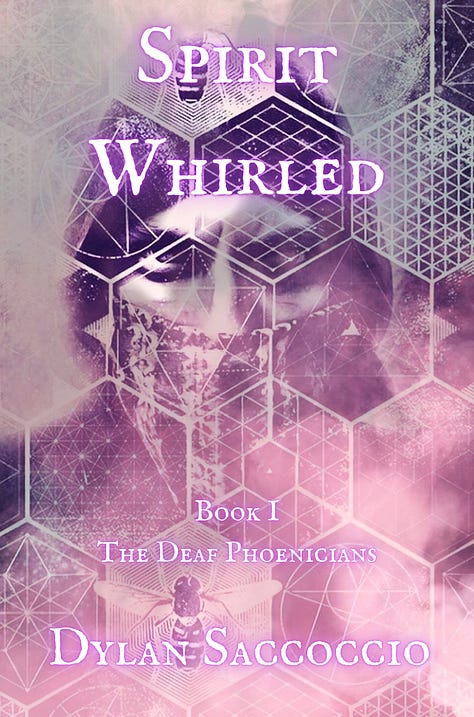


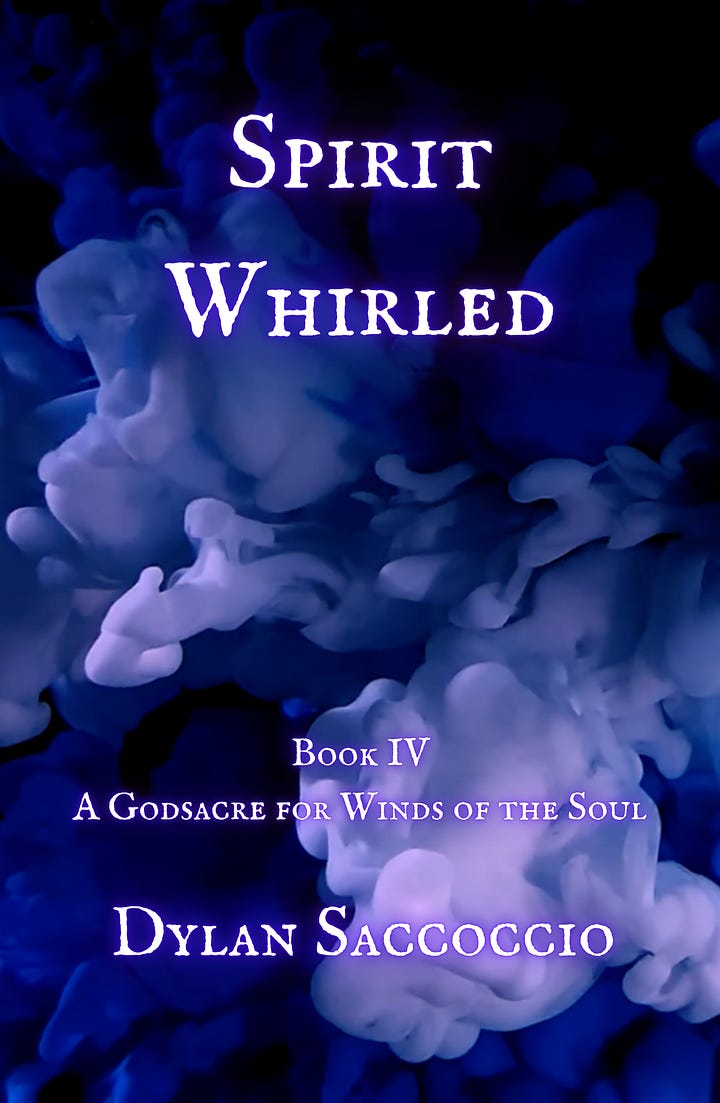
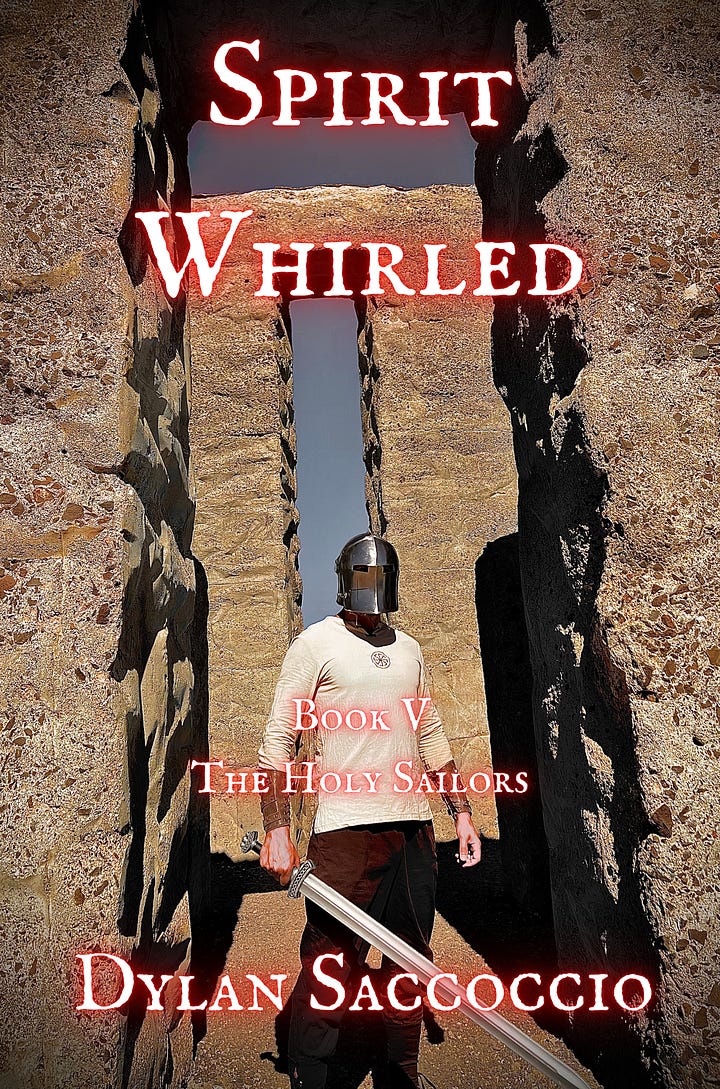
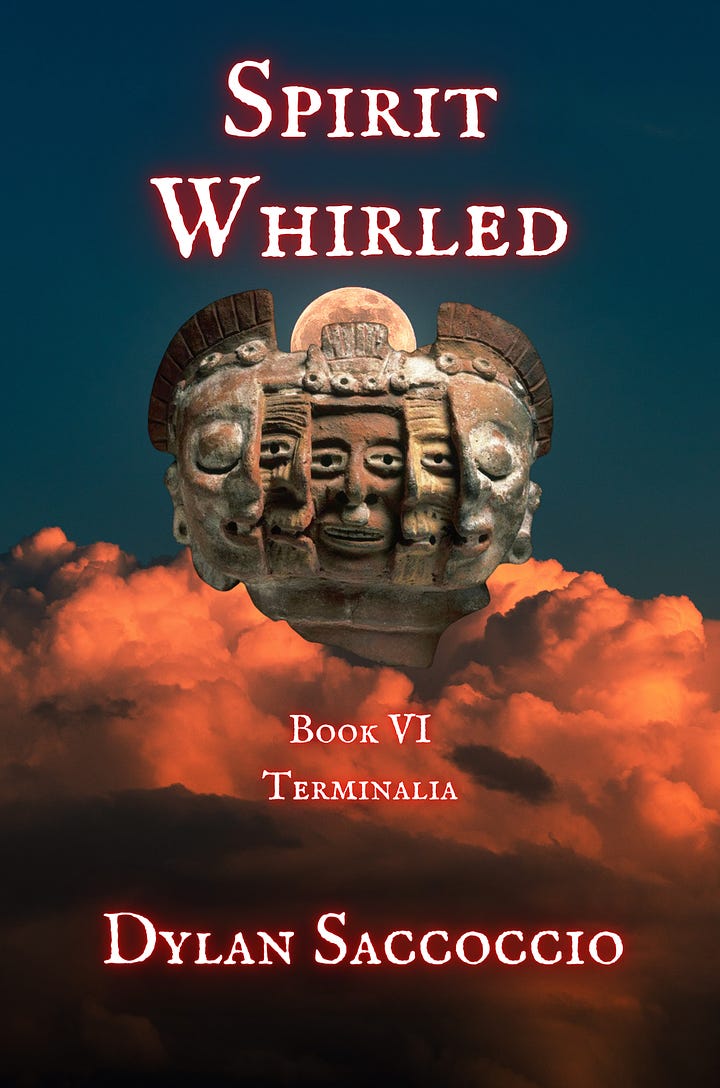

Become a member to access the rest of this article.
Keep reading with a 7-day free trial
Subscribe to Dylan Saccoccio Newsletter to keep reading this post and get 7 days of free access to the full post archives.




